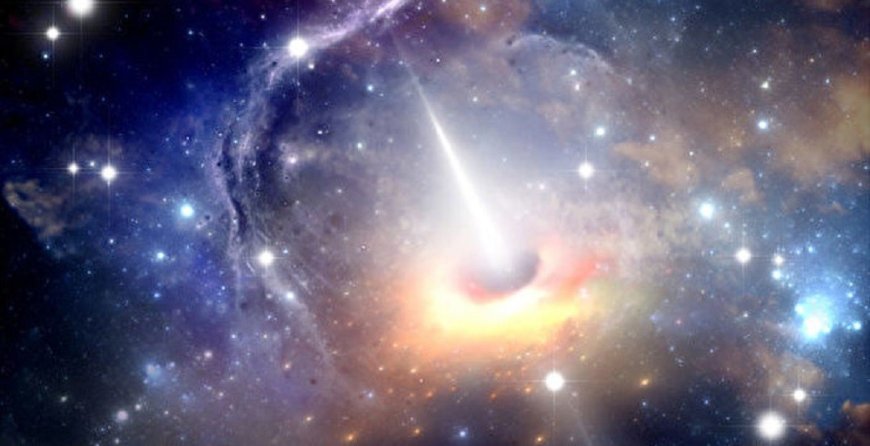Gravitational gamma-ray lensing indicated a medium-mass black hole
which astronomers interpreted as a black hole of average mass. Gravitational gamma-ray lensing indicated a medium-mass black hole.

The researchers recorded the gravitational lensing of the GRB 950830 gamma-ray flash, which they write in the journal Nature Astronomy. The gravitational lens indicated the mass of the object, which astronomers interpreted as a black hole of average mass. Gravitational gamma-ray lensing indicated a medium-mass black hole.
What is known about intermediate mass black holes?
Black holes in the range of one hundred to one million solar masses have long been hypothetical, but evidence of their existence is growing. Scientists have long suspected that such objects may be located, in particular, in the nuclei of globular clusters. The most massive stars in such groups move to the center and merge, forming a massive megastar, the mass of which can be about a thousand solar masses. Such stars have a short lifespan and can form the basis for a black hole of intermediate mass, which subsequently grows due to the accumulation of material and mergers. However, direct evidence of the existence of black holes of intermediate mass has not yet been found. Their mergers are difficult to detect by modern generations of gravity wave detectors due to the large mass of the final fusion product, and the size of such black holes is too small to be observed using the same methods. which are used to detect supermassive black holes in galactic centers. Gravitational lensing is one of the few ways to estimate the number of intermediate mass black holes. It occurs when the path of light from distant sources is distorted near massive objects.
What did astronomers record?
The researchers analyzed a sample of 2,700 gamma-ray bursts to find those that had undergone gravitational lensing. Gamma-ray bursts are extremely bright emissions of the most energetic electromagnetic radiation, called gamma rays. Their energy can be from 100 to 300 kiloelectronvolts. It is believed that they are generated by the rapid fall of material on a black hole of stellar mass, formed or supernovae, or by merging compact objects.
Must Read: Brain stimulation: Technologies to help read thoughts and treat
The material is launched by relativistic jets directed in opposite directions along the axis of rotation (jets). Part of this flux is converted into electromagnetic radiation, which is amplified to gamma rays. It is estimated that at least some of the gamma-ray burst population should be lensed. The researchers found candidates for such flashes, the most statistically significant of which was the short gamma-ray burst GRB 950830. The team analyzed which object could create its gravitational lensing.
What were the results?
Researchers have found that the mass of this object is about 55 thousand times the mass of the Sun. They ruled out the possibility that it could be a globular cluster or a halo of dark matter and interpreted it as a black hole of intermediate mass. In addition, based on these data, astronomers were able to calculate how common such black holes are. According to their calculations, their current concentration is 2,300 per cubic megaparsec. That is, for 15 million billion cubic light years there is one black hole of intermediate mass. If there is a large population of medium-sized black holes, they could be the basis for the growth of supermassive black holes in the early universe.
In 2020, astronomers first recorded a black hole of intermediate mass using gravitational waves. Recently, researchers searched for such a black hole inside a globular cluster, but it turned out that it was instead filled with black holes of stellar mass.
